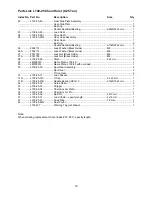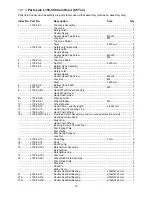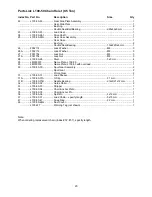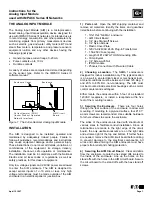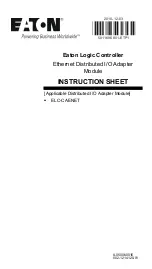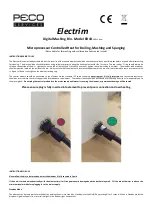
5.0
Using the Chain Hoist
5.1
Prior to Operation
1. Support for the hoist may be hook, clevis pin,
trolley, or beam clamp. Whatever method of
suspension is chosen, the support components
must
be rated equal to, or greater than the
capacity of the chain hoist.
2. If the chain hoist has not been used for an
extended period of time, check for proper
operation before putting into service.
3. The brake mechanism must be kept clean and
free from dirt, water, and oil. Never allow oil to
penetrate the brake mechanism. Always keep
your chain hoist clean and store in a clean, dry
location.
4. Although oiling the chain is not mandatory, a
light coat of 30-weight oil applied periodically to
the chain will create easier operation and
prolong the life of the chain.
5. Check the chain for damage and elongation.
Replace damaged chain before using the chain
hoist.
The load chain supplied with your JET chain hoist
is designed, manufactured, and tested for proper fit
and durability. Over a period of time, the chain may
need to be replaced. For your own safety, use
factory replacement chain only.
Use of other than factory
replacement chain may cause serious injury
and/or damage to the hoist.
6. The top and bottom hooks on your JET chain
hoist are designed to open to warn of an
overload. Both top and bottom hooks for 0.5 to
5 ton hoists have two indicator points (A, Figure
1) cast into the hook for measurement. Refer to
Table 2 (page 13) to determine if a hook needs
to be replaced.
Hooks for 10- and 20-ton hoists do not have
indicator points. Measurements are made at
the jaw opening (B, Figure 1).
7. It is important to check top and bottom hooks
for proper opening. If the safety latch no longer
contacts the hook opening, replace the hook.
Never side load the top or bottom hook; this
practice is dangerous and could lead to
serious injury.
8. If the vertical angle at the neck of the bottom or
top hook reaches 10
°
, replace the hook (see
Figure 2).
Figure 1
Figure 2


















